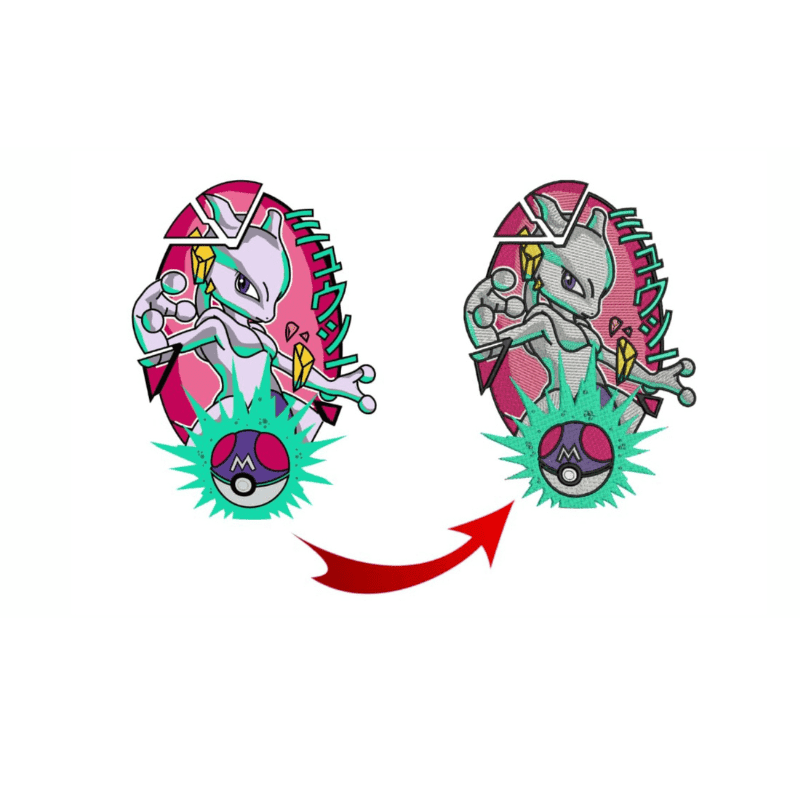Understanding the Embroidery Digitizing Refine: Your Ultimate Guide
Embroidery digitizing is a thorough craft that requires precision and knowledge to convert intricate styles right into digital formats for equipment embroidery. As artisans get started on this trip to master the embroidery digitizing procedure, a comprehensive understanding of the fundamentals establishes the foundation for excellence. Beyond the basic understanding exists a world of sophisticated software program, specialized tools, and nuanced methods waiting to be discovered. By diving into the nuances of digitizing, one can open a world of innovative opportunities and elevate their embroidery jobs to brand-new heights.

Comprehending Embroidery Digitizing Fundamentals
Embroidery digitizing fundamentals develop the foundation upon which elaborate styles are equated into machine-readable styles for accurate sewing. This preliminary action in the needlework digitizing procedure is vital for making certain that the last stitched item is a loyal representation of the initial layout. Understanding embroidery digitizing basics includes understanding crucial principles such as stitch kinds, sew direction, thickness, rug, and draw compensation.
Stitch types play a crucial function in figuring out the aesthetic and textural end result of the embroidered design. By choosing the ideal stitch kind, whether it be satin, fill, or running stitch, digitizers can achieve the desired effect and enhance the overall quality of the needlework. Additionally, sew instructions influences the flow and dimension of the layout, while thickness establishes the spacing and insurance coverage of the stitches.
In addition, padding sewing gives security to the style by protecting the fabric and preventing distortion throughout the needlework process. Draw payment is another important factor to consider to neutralize the all-natural tendency of fabric to agreement when stitched. Mastering these needlework digitizing fundamentals is fundamental for developing professional-quality embroidered items.
Choosing the Right Digitizing Software Program
Selecting the proper digitizing software is a vital choice that significantly impacts the effectiveness and high quality of the needlework digitizing procedure. Digitizing for Embroidery. When choosing the best digitizing software application, it is vital to consider elements such as the complexity of styles you intend to create, the user-friendliness of the software, the level of client assistance supplied, and the compatibility with your needlework machine
There are various digitizing software application choices readily available in the market, ranging from basic programs for novices to advanced software for professional digitizers. Some prominent options consist of Wilcom EmbroideryStudio, Hatch Needlework Software Program, and PulseID. These software packages use a large range of tools and functions to assist you develop detailed designs with simplicity.
Prior to choosing, it is recommended to discover the various software program options with cost-free tests or trials to establish which one ideal matches your demands. In useful reference addition, reviewing evaluations and looking for suggestions from skilled digitizers can provide important insights right into the toughness and weaknesses of each software (Digitizing for Embroidery). By carefully evaluating your needs and comparing the functions of different digitizing software program, you can make an enlightened selection that improves your embroidery digitizing operations
Digitizing Devices and Methods

Optimizing Design Settings for Embroidery
Grasping the ins and outs of layout setups is fundamental in achieving optimal cause the embroidery digitizing process, building upon the structure laid by comprehending digitizing tools and strategies. When maximizing layout setups for needlework, it is necessary to think about aspects such as stitch kind, thickness, padding, draw settlement, and registration. Sew type selection affects the general feel and look of the style, with options like satin, fill, and running stitches providing different textures and results. Thickness describes the spacing and thickness of stitches, influencing the layout's insurance coverage and durability. Correct padding stitching offers stability and protects against textile distortion, specifically for complicated layouts or on stretchy materials. Draw payment changes for textile stretch throughout stitching, ensuring exact layout replication. Registration setups line up different elements of the design properly, keeping general style integrity. By fine-tuning these design settings, embroiderers can enhance the top quality and precision of their stitched creations.

Troubleshooting Common Digitizing Issues
When encountering common digitizing concerns throughout the embroidery this hyperlink process, it is crucial to recognize the root causes and apply reliable remedies immediately. One common trouble is stitch thickness concerns, where stitches may be also dense, causing the textile to tighten, or also sparse, leading to gaps in the design. Readjusting the stitch thickness settings in the digitizing software application can help solve this issue.
Another constant challenge is string breaks during the embroidery procedure. This can happen due to different reasons such as wrong stress settings, plain needles, or utilizing low-quality string. Making sure appropriate upkeep of the embroidery device, including normal needle changes and stress modifications, can minimize the incident of thread breaks.
Furthermore, layout enrollment errors can lead to misaligned elements within the embroidery design. Examining the layout alignment in the digitizing software and making necessary adjustments prior to sewing can aid in preventing this problem. By dealing with these typical digitizing issues promptly and effectively, you can ensure a smoother embroidery procedure and high-quality finished items.
Final Thought
To conclude, grasping the embroidery digitizing procedure calls for a solid understanding of the basics, the right selection of software program, and expertise of devices and methods. Optimizing layout setups and fixing common digitizing concerns are critical action in guaranteeing top quality needlework outcomes. By following these actions carefully, one can accomplish accuracy and performance in the digitizing process.